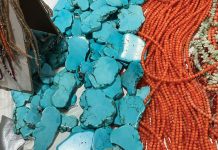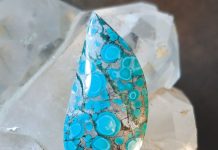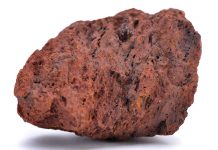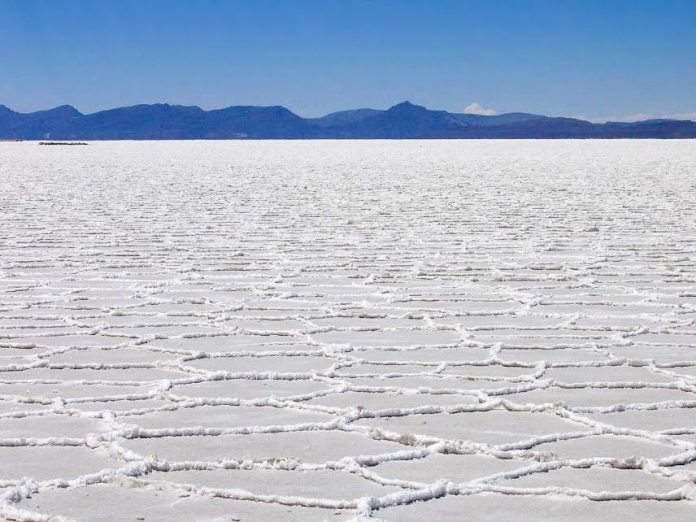
Salar de Uyuni (sa-LAR day ooh-yooni) draws relatively few visitors, but millions have seen the immense salt flat on the big screen. In the 2017 movie Star Wars: The Last Jedi, Salar de Uyuni was the filming location for the fictional Crait, a small planet where white salt covers bright-red, mineral-rich soil, and the Resistance fought the First Order in a climactic battle.
But the notoriety of Salar de Uyuni, located at the lofty elevation of 12,000 feet in remote southwestern Bolivia, goes far beyond its Star Wars connection. Visible from space, it’s the world’s most extensive salt flat, flattest large land area and largest natural mirror. Most importantly, Salar de Uyuni contains the world’s largest known lithium deposit.

Salar de Uyuni: High Elevation Bolivian Salt Flats
Familiarly known as “the Salar,” Salar de Uyuni sits in the Bolivian Altiplano, a broad, high-elevation plateau in the Andes Mountains. Around 40,000 years ago, a huge lake covered the region, and a changing climate transformed it into Salar de Uyuni.
The Salar is an endorheic or closed drainage basin. With no outflow, water loss occurs only through evaporation. Incoming water from snowmelt and wet-season rain contains dissolved mineral salts, which seasonal evaporation causes to precipitate from solution onto the lake bed. Thousands of these annual, repetitive replenishment-and-evaporation cycles eventually created a massive salt deposit.
Salar de Uyuni is nearly the size of the state of Connecticut and 100 times larger than Utah’s better-known Bonneville Salt Flats. The Salar lake bed consists of interbedded layers of fine-grained lacustrine mud and salt immersed in a brine saturated with the dissolved chlorides of sodium, magnesium and lithium. Its surface crust varies in thickness from mere inches to several feet. In its entirety, the Salar contains some 10 billion tonnes of mixed-chloride salts.

Ancient History of the Salar
Salar means “to salt” in Spanish; Uyuni is an Aymara Indian word meaning “enclosure” and referring to the area’s many llama pens. The indigenous Aymara people have long utilized the Salar’s salt both for food preservation and rituals. According to Aymara legend, the surrounding volcanic mountains Kusku, Tunupa and Kusina were once giant, God-like beings. While married to Tunupa, Kusku had an affair with Kusina. As grieving Tunupa cried while breastfeeding her son, her tears mixed with her milk to create the white salt of the Salar.
The Salar was named for the Uyuni trading post that was established in 1890 to serve local quinoa farmers and llama herders. A few years later, British engineers, while constructing a regional railroad, helped found the town of Uyuni, along with a commercial salt plant that operated until 2000. Since then, a small cooperative of independent miners has manually harvested and shipped salt from the Salar.
The Science Behind Salar de Uyuni: Earth’s Brightest Mirror
The flatness of the Salar is remarkable. Its elevation varies less than three feet over its entire 4,100-square-mile area, making it an ideal registration point for the calibration of satellite radar altimeters.
The Salar is also the Earth’s brightest natural mirror, reflecting 98% of the sunlight that strikes it. This mirror effect is maximized during the rainy season (December to March) when the Salar is covered with a thin layer of water that creates a perfect, mesmerizing mirror image of the sky above. Geologists estimate that the Salar contains nine million tonnes of lithium chloride— roughly half the world’s known resource of a metal critical for manufacturing batteries and electric vehicles.
But a lithium-recovery pilot plant constructed in 2000 proved unsuccessful for a number of reasons. First, brine must be pumped to the surface for evaporation, a process that is compromised by the high elevation and cool climate. Converting lithium chloride into commercial lithium carbonate requires large amounts of fresh water—another problem on the arid Altiplano. The Salar’s brine is also unusually rich in magnesium chloride, which is difficult to separate from lithium chloride. Finally, establishing a lithium industry requires large-scale, outside assistance and many Bolivian citizens, citing their nation’s economically disastrous history of foreign exploitation, oppose lithium-industry development. Nevertheless, Russian and Chinese lithium-recovery projects on the Salar are now in the planning stages.
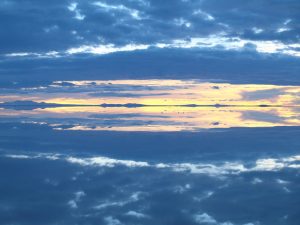
Salar de Uyuni: Tourism & Film Fame
The gateway to the Salar is the nearby city of Uyuni, population 29,000. Uyuni has air and bus connections to major Bolivian cities and a host of guided-tour companies to take visitors onto the salt flats. There are several “salt hotels” built largely of salt blocks cut from the crust of the Salar. These hotels are rebuilt every 12 to 15 years, as seasonal rains slowly dissolve the salt blocks.
Regional tourism grew slowly since the 1990s but boomed after the 2017 release of Star Wars: The Last Jedi, when filmmakers featured Salar de Uyuni as the red-mineral planet Crait, thrilling fans worldwide. In the climactic battle, a fleet of Resistance “ski-speeder” assault vehicles races across the white salt crust, churning up clouds of underlying bright-red “mineral dust.” The white, of course, was the Salar’s natural surface; the clouds of “mineral dust” were special-effects red smoke.
Salar De Uyuni: Did You Know?
-
Salar de Uyuni is visible from space, appearing as one of the brightest natural surfaces on Earth because it reflects about 98% of incoming sunlight.
-
The Bolivian salt flats cover more than 4,000 square miles, making Salar de Uyuni larger than Connecticut and 100 times bigger than Utah’s Bonneville Salt Flats.
-
The salt crust varies widely—from a few inches thick to several feet—with brine rich in sodium, magnesium, and lithium beneath the surface.
-
More than 400,000 travelers visit each year, with tourism surging after Star Wars: The Last Jedi filmed its Crait battle scenes on the flats.
-
Formed from prehistoric lakes, the region has undergone tens of thousands of wet-dry cycles, each contributing new layers of salt and minerals.
-
According to Aymara legend, the goddess Tunupa cried tears and spilled milk, creating the salt flats and giving them their brilliant white surface.
-
Salar de Uyuni may hold roughly half of the world’s known lithium resources, though extraction remains technically challenging and politically sensitive.
-
Several Bolivian hotels near the flats use massive salt blocks cut directly from the crust, and builders must reconstruct the structures every 12–15 years because of seasonal rains.
Final Thoughts
Today, the ski speeders and red smoke are gone from the Salar, leaving behind only the gleaming white surface of the world’s largest salt flat and greatest lithium deposit. But that’s more than enough to attract some 400,000 visitors each year.
This story about Salar de Uyuni previously appeared in Rock & Gem magazine. Click here to subscribe. Story by Steve Voynick.


